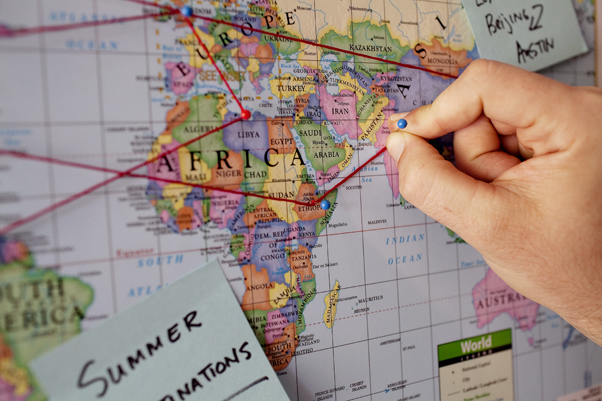With a typical shoestring student budget culled together by a part-time job, parental subsidies, financial aid and student loans, an exotic international summer vacation seems far beyond reach. Finding affordable accommodations across the globe has become easier than ever with youth hostels and clever websites such as couchsurfing.com, a network of international participants willing to let you stay in their homes for free while traveling. Getting there, however, is the greater challenge. Here are some tips for bringing a dream vacation closer to reality:
Take advantage of student discounts.
Travel agencies like STA Travel and StudentUniverse are tailored specifically to student budgets. While they deal mostly in cheap airfare (with flights usually less than $1,000), it’s the restrictions like cumbersome maximum-stay limits that these sites are able to negotiate out of that are most attractive.
Travel during the offseason.
For students, this is going to be May and June, where most everything from flights to hotels are cheaper than they will be the further into summer. Remember that traveling during summertime months in the U.S. doesn’t necessarily mean you’re in for beach weather elsewhere; it’s about to be winter in Australia. Luckily, wintertime down under is also the cheapest time to travel. Currently, you can find tickets to Australia on STA Travel for $200 less than if you were to fly later in the year.
Fly via no-frills airlines.
Airlines such as Ryanair and Easy Jet are the European equivalents to Southwest, offering bare bones travel arrangements (your seats will be in a permanent upright position, and your life vest will likely be dangling above you) for as little as $20, depending on where you want to go. Wikitravel.org has a comprehensive list of international budget airlines.
Be your own travel agent.
Sites like Orbitz and Kayak will do all the heavy lifting for you, calculating your trip — down to layover destinations, hotel bookings and car rental — in seconds. But some time, research and careful planning could yield you an even better deal than those sites might offer. For example, to fly from Austin to Paris, you could try to find a direct flight — at press time, Kayak offered a direct flight for about $1,200. Instead, you could fly to Chicago for $289 through STA. From Chicago you can get a flight to Paris from cheapair.com for $772 roundtrip. That’s almost $200 in savings, more if you find an alternative method (such as driving) to get to Chicago.
Take a Phantom Flight.
The New York Times Magazine offers a unique, somewhat ethically-dubious trick that takes advantage of layover destinations. Let’s say you want to go to Disney World in Orlando. On Kayak, a direct flight from Austin to Orlando for June 1 is $746. But a ticket from Austin to New York with a layover in Orlando is $338. You can save more than $400 by buying the ticket to New York and skipping your connecting flight.
Airlines frown upon this, and you could be banned from that particular airline forever, but, according to the NYT Magazine’s article, “their case for demanding penalties is weak, and the risk of detection is low if you don’t book these kinds of routes more often than a couple of times per carrier per year.” If you’re caught, as in most cases, you’ll save yourself a lot of trouble if you just fess up.














